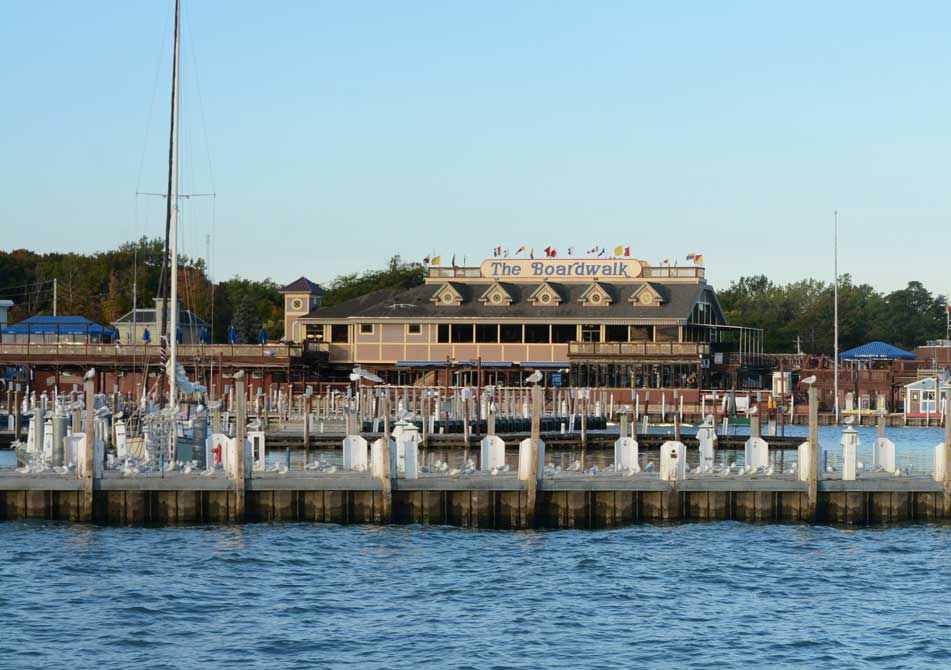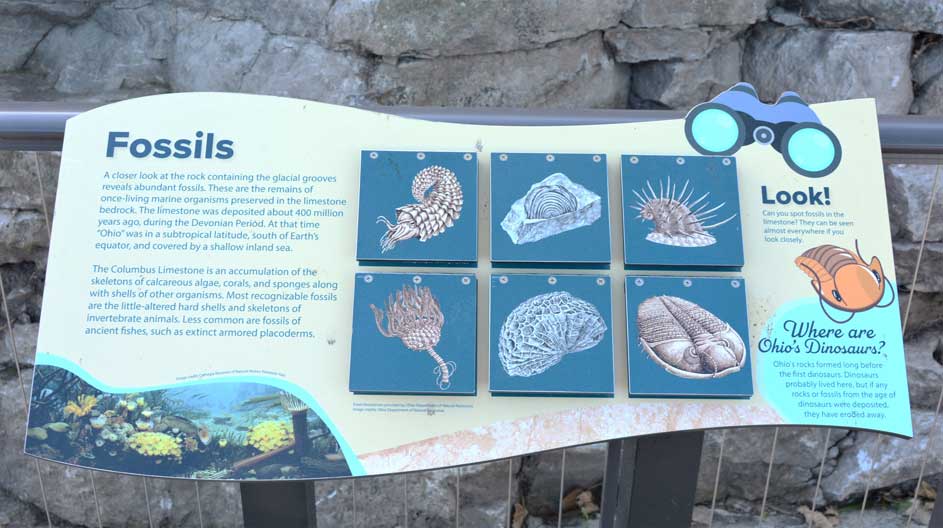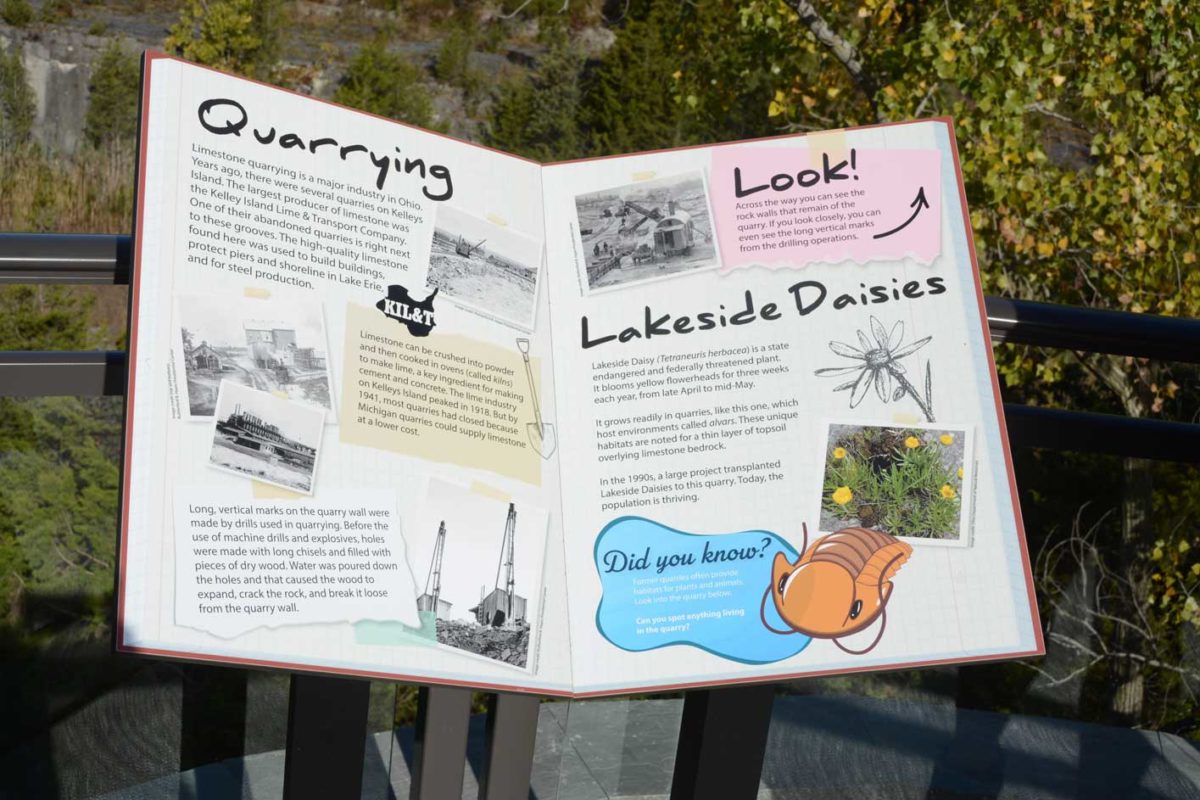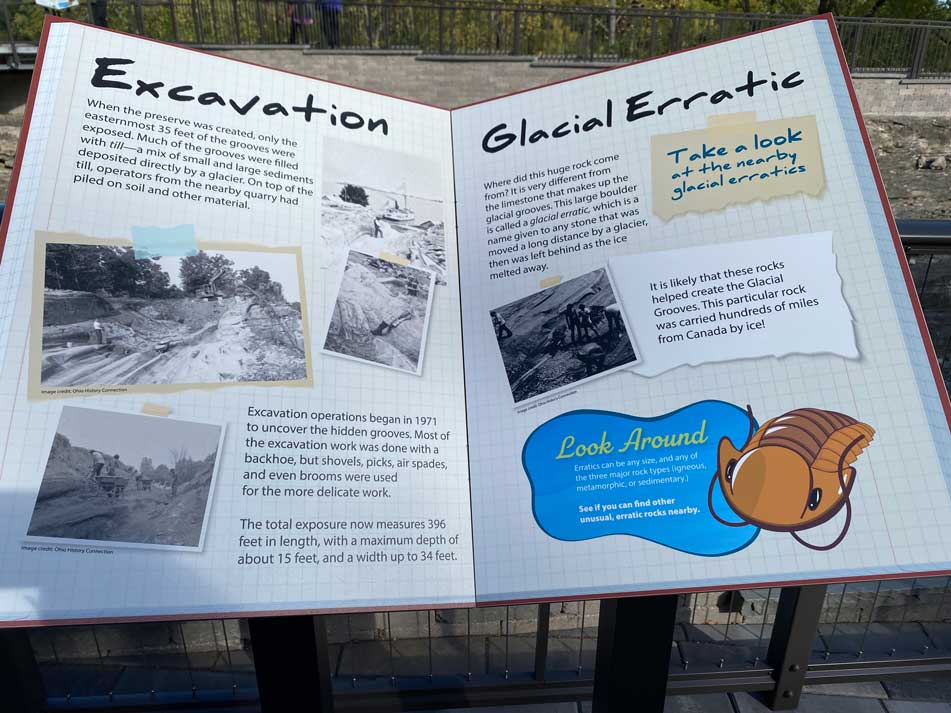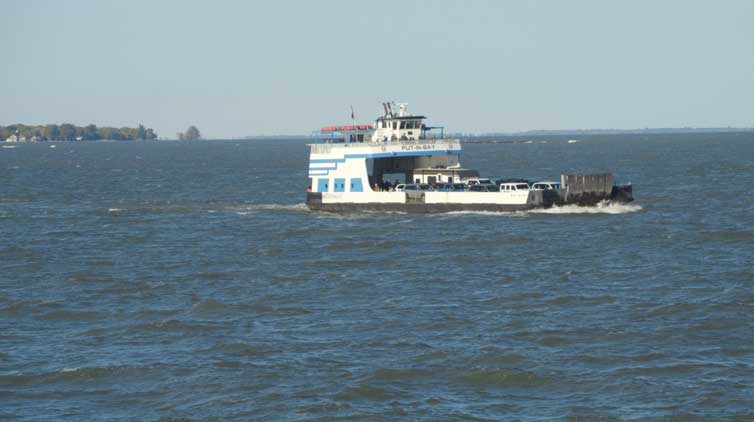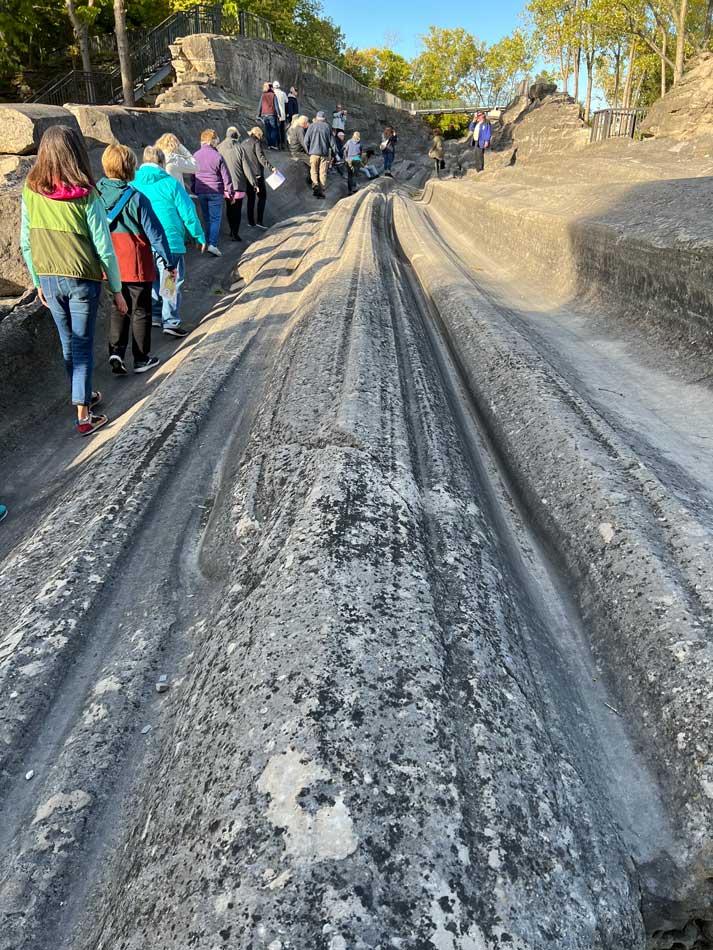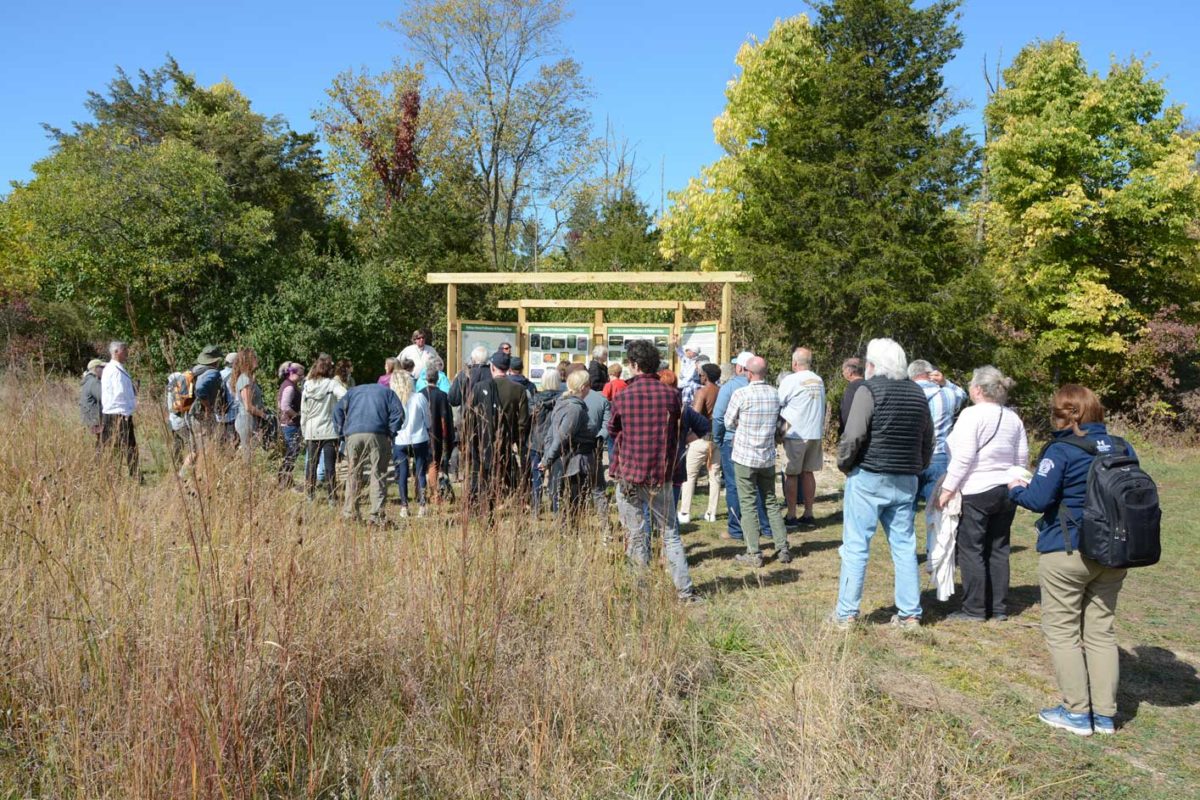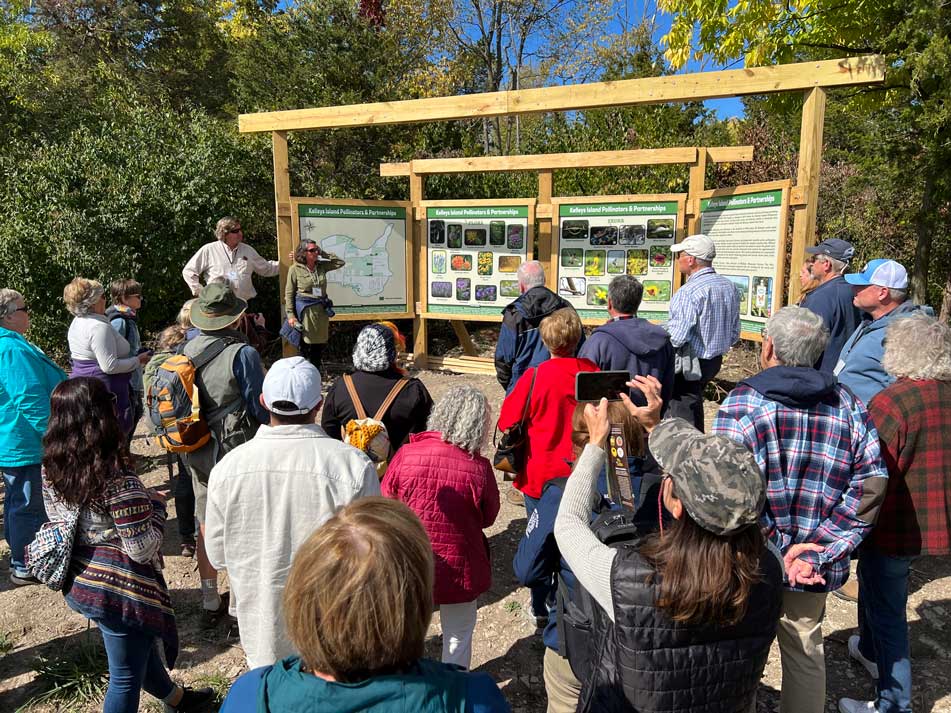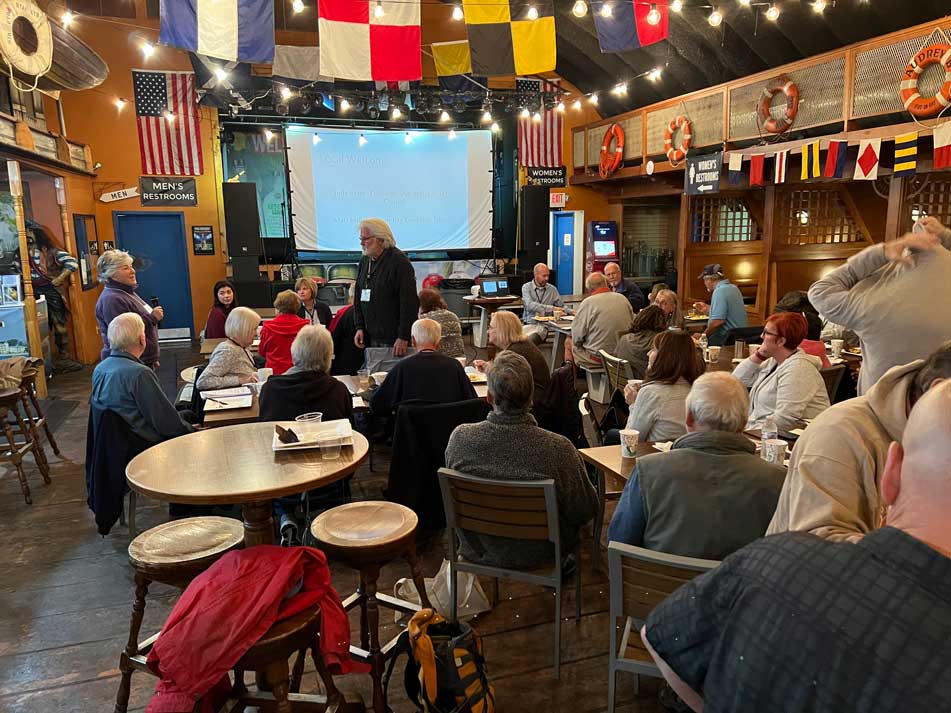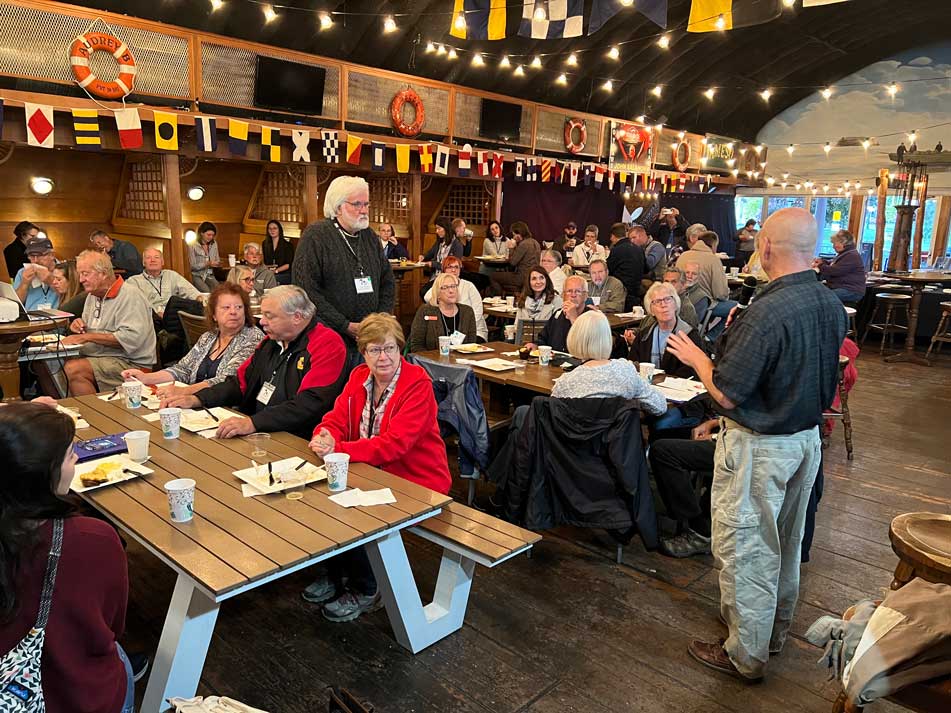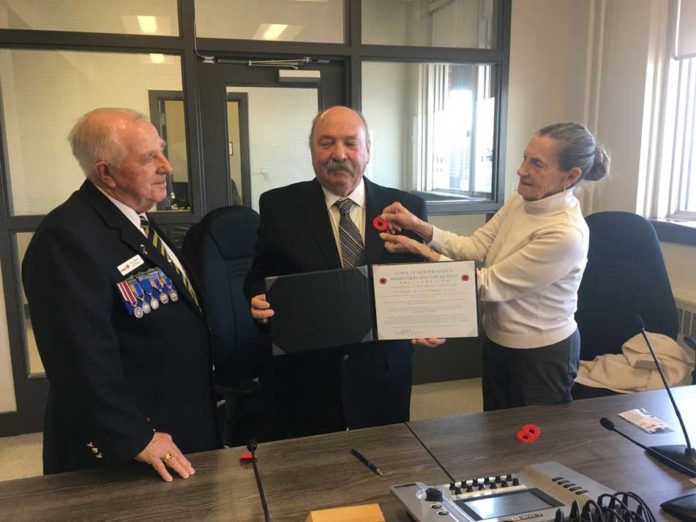LAKE ERIE—After two years of delay caused by the COVID pandemic, the 4th Great Lakes Islands Alliance (GLIA) Summit finally took place, this time on the islands of Lake Erie, north of Ohio, October 2-5. The Summit was packed with meetings, tours and discussion about issues of interest and concern to islanders.
This reporter and wife, Marilyn, were the only residents from Manitoulin Island to make the 10-hour trip from Northern Ontario to Ohio but the experience was exhilarating. We toured five islands in Lake Erie over four days starting with South Bass, Middle Bass, Kelleys, Gibraltar, all part of Ohio, then Pelee Island, the only Canadian destination.
At each island we were exposed to tourism, infrastructure, problems associated with the hospitality industry (attracting young people and housing), conservation of natural resources, water issues and pollution, invasive species, and establishment of destination tourist attractions.
The business part of the Summit where we compared and discussed island issues occurred in the community of Put-in-Bay on South Bass Island and from there, we took ferries to the other islands. Each island has an attractive marina except Gibraltar sporting nearby restaurants and shops in support of boaters and visitors.
Summit business, along with meals was held at a restaurant called the Boathouse Bar and Grill in Put-in-Bay near the ferry crossing to the other islands. This restaurant was multipurpose and large enough for small conferences. Another nearby complex in Put-In-Bay called the Boardwalk is large enough for several hundred guests.
On South Bass, which has a population of about 700 permanent residents, participants were shown the seniors center, volunteer fire department, police services, and a tour of the K-12 school, the Butterfly House, caves, and a winery. The Nature and Wildlife Centre with displays of island flora and fauna has become a major tourist attraction.
In the afternoon, participants were transported by ferry to Middle Bass Island for lunch and keynote address by Dr. Jeffrey Reutter, retired Director of Ohio State Univeristy’s Stone Laboratory and Ohio Sea Grant on Gibraltar Island.
Dr. Reutter provided an overview of Lake Erie ecosystems, eutrophication, fisheries, invasive species, pollution, impact of agriculture on water quality, global warming and forecasts of the health of all five Great Lakes.
On Tuesday we took a jet boat to Kelleys Island to visit the world renowned ‘Glacial Grooves,’ now a major destination tourist attraction. Evidence of glaciers are found on all Erie islands, as they are on Manitoulin Island, but none of the scrape marks are as prominent as those on Kelleys.
Kelleys identifies the impact of glaciers and the presence of fossils in their alvars with extensive signage. The island also has a pollination park developed on public land by the state of Ohio.
We returned to South Bass in the late afternoon and visited small Gibraltar Island off the north shore. Gibraltar Island is owned by Ohio State University and is home to the OSU Stone Laboratory devoted to studying the ecology of Lake Erie.
We were told how Gibraltar Island played a pivotal role in the War of 1812 and how the British navy was defeated near here. Americans appear more attuned to history than Canadians and use historical events to enhance tourism.
The following day we boarded a high-speed catamaran to Pelee Island, Canada’s most southern populated island, which most Americans had not visited. On our way, we passed Middle Island which is the most southernmost land point in all of Canada. At 41.7 degrees north latitude, 27 U. S. states, including California, lie partially or fully north of this point.
We were welcomed by staff of the Pelee Island Winery and taken on tours where we learned about the history of wine making, conservation and infrastructure. We visited the Pelee Island Heritage Centre, a butterfly sanctuary, wetlands reclaimed by the Nature Conservancy of Canada, and a historic house turned into a restaurant and brewery.
Back at the winery restaurant, we heard an inspirational speaker who explained how Pelee residents united to take on the Ontario Ministry of Natural Resources over conflicts between a rock quarry, conservation of natural habitats, and agriculture. He explained how a process of non-combative messaging and coordinated meetings attended by citizens, businesspeople and politicians was so successful, it became a model for solving similar issues on the mainland.
An elaborate meal was provided by the Pelee Island Winery with contributions from all island restaurants, a good example of island cooperation.
Overall impression and suggestions for Manitoulin
Established in 2017, the mandate of GLIA is to bring together island leaders, residents and advocates from across the international Great Lakes region to encourage the building of relationships between islands, foster the exchange of information, and leverage resources to address shared challenges.
Attending GLIA Summits and experiencing the way of life, culture, and economic development elsewhere prompts comparison with our island and to bring back suggestions as to how life for permanent residents and visitors here can be improved.
Residents of the Lake Erie islands we met are passionate about their islands and anxious to explain both their human and natural history. They make all aspects of their islands known to visitors by affective signage.
However, as I continue my association with GLIA, it has become apparent that Manitoulin is an anomaly compared to other islands in the Great Lakes. Its sheer land mass, size of the permanent population, presence of eight distinct and somewhat independent municipalities, along with six First Nations, agriculture, forestry, fisheries, and mining of limestone make it different from all other islands in the Great Lakes.
Manitoulin has a population of about 14,000 permanent residents, which means that along with summer and winter tourists and cottage owners, there is the potential to support a more active tourism and hospitality industry that will provide employment and keep young people on the island.
The arrival of cruise ships at Little Current provides Manitoulin the opportunity to expand its tourism industry. Guests on the cruise ships have a thirst for knowledge and new experiences.
Manitoulin Island plays a key role in providing guests of the Great Lakes cruise ships with an indigenous experience. Thanks to the efforts of Kevin Eshkawkogan, Indigenous Tourism Ontario has landed a large grant that will further enable Indigenous people to explain the culture to visitors.
The best part of attending GLIA Summits is the opportunity to explain Manitoulin Islands to participants. Most are surprised to learn that the population of Manitoulin is roughly half First Nations and what sets Manitoulin apart from most other Canadian communities is the unique cooperative relationship between the six First Nations and the rest of the island population.
While Lake Erie islands such as Kelleys suffer from a dwindling population of school children where in some schools there are more teachers than students, we give little thought to having two high schools and eight elementary schools. Residents of the Lake Erie islands who become ill or hurt must be removed to the mainland hospitals whereas we have the security of two hospitals.
Residents of other islands are amazed that our Chi-Cheemaun ferry carries over 120 automobiles and 500 passengers and has a restaurant. They are impressed to hear that Manitoulin Island has enough natural land to support timber wolves and over 1,200 black bears.
While a small percentage of Manitoulin residents muse that Manitoulin is not an island because of its size and dynamics and is too closely linked to the mainland. However, we are all familiar with the feeling of calmness and well-being Manitoulin provides when returning on the Chi-Cheemaun in South Baymouth or arriving in Little Current after waiting 15 minutes for the bridge to reopen.
GLIA helps all associated with islands in the Great Lakes appreciate that being surrounded by water results in a culture and a way of life distinct from that on the mainland. Visitors quickly see examples of islanders supporting each other and grasp the meaning of ‘island time.’
The challenge for Manitoulin, if we look into a crystal ball and imagine life here 25 years from now, and a larger population, is to develop our local commerce and tourism in a sustainable manner that keeps a substantial portion of the island and surrounding waters in its pristine condition.
GLIA is anxious that Manitoulin establish a larger committee to help connect Manitoulin Island to the peoples on islands elsewhere. Hopefully a GLIA summit will be held here in the future so we can showcase first-hand the features and accomplishments of Manitoulin Island.
GLIA sent its project director and documentary film maker, Peter Huston of South Bass Island, to Manitoulin in May of this year to make a film entitled ‘Man-o-Manitoulin. View it on the Great Lakes Island Alliance YouTube page.
For further information on GLIA, check out the website at www.glialliance.org or Facebook at www.facebook.com/glialliance. If you are interested in joining the Manitoulin GLIA team, contact me at jmwildroses@gmail.com or Peter Huston at phuston@glialliance.org.
EDITOR’S NOTE: Joe Shorthouse is a member of the GLIA Steering Committee and a summer resident of Manitoulin Island
